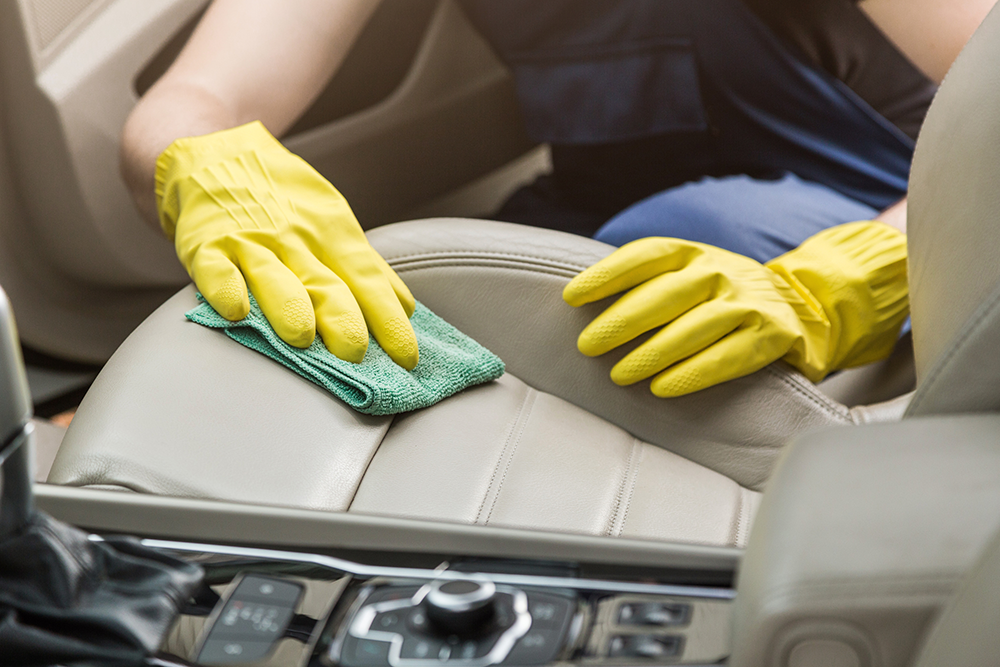Improve the health of your car's interior

The interior of your vehicle is like the interior of your home. Maintained properly, it provides a healthy environment and surfaces hold up better. Neglected, you may find yourself spending time and money on repair for worn out materials. How can you get the most mileage out of your interior?
"Caring for your vehicle's upholstery and other components not only maintains their appearance but can add years of life and increase its resale value," said James Franklin, past chairman for the trim segment of the Automotive Aftermarket Industry Association and former automotive sales engineer at Chrysler Corporation. "There are lots of good products that help keep your car interior in good condition and help reduce wear."
Interior surfaces require different types of maintenance. Here are the Franklin's basic tips for improving the health and life your vehicle's interior:
- Replace interior filters in the climate control system. Dust and pollen can accumulate quickly if you have been traveling along rural and mountain roads.
- Vacuum frequently. Regular vacuuming helps remove odors and allegy-causing particles that accumulate in porous materials. Also, dirt and grime contribute to wear; they act like sandpaper against soft surfaces.
- Wipe down vinyl. Clean regularly with quality vinyl upholstery cleaner and a soft cloth. For stubborn dirt, apply the cleaner with a soft, nylon-bristled brush and scrub gently. Do not use harsh chemicals like solvents or bleach—they damage or discolor upholstery. Avoid abrasive cleaning pads because may cause scratches and accelerate wear. Abrasive cleaners also create a porous surface that attracts dirt.
- Clean up spills quickly. They can turn into permanent stains if not treated right away. Use a carpet or upholstery spot cleaner according to the manufacturer's recommendations. Test all cleaners for color-fastness in a hard-to-see spot first before using in a more conspicuous place.
- Use upholstery cleaner and protectant. Dirt and liquids readily embed themselves into the structure of fabrics. Clean upholstery occasionally with quality automotive upholstery cleaner, not harsh industrial solvents or cleaning agents. Do not use metallic brushes to free ground-in dirt. Read manufacturer labels carefully before applying cleaners, and test a small amount on an inconspicuous spot such as underneath a seat.
- Use fabric guard on rugs and seats. Fabric guards help repel water and prevent stains. And they make cleanups easier. Look for products designed for automobile interiors.
- Treat leather surfaces twice a year. Use a leather cleaner with a white, all-cotton, terrycloth towel. Apply it in a steady, gentle circular motion. Wait a few minutes and wipe the treated area with a second towel. For particularly soiled upholstery, you may repeat applications as needed. Afterward, use a leather conditioner. It keeps leather supple and protects against cracking.
- Keep surface cleaning cloths handy. You can use microfiber towels or disposable cleaning cloths made specifically for automobile interiors. These products bond to dirt rather than moving it around. Keep some in the glove compartment for use between major cleanings.
- Use odor retarding sprays. Odors may linger even though the interior looks clean. Sprays help neutralize obnoxious smells. Check labels to make sure they are made for your automobile interior.
"Always review and follow the manufacturer's directions on the back label before applying any product," Franklin said. "Using the wrong product, or using it the wrong way, can actually cause deterioration of interior surfaces."